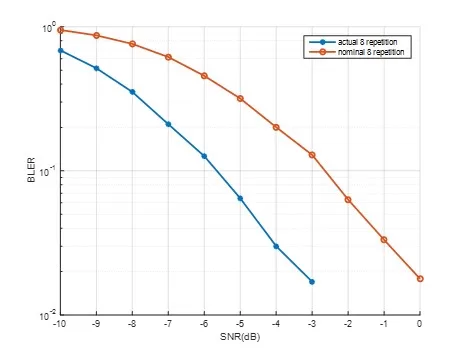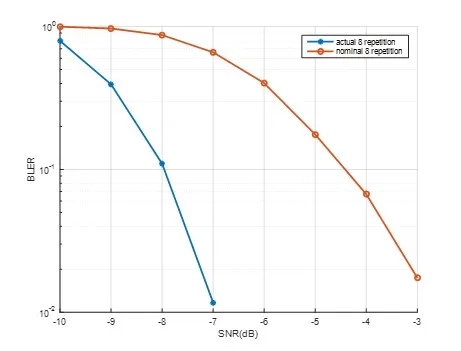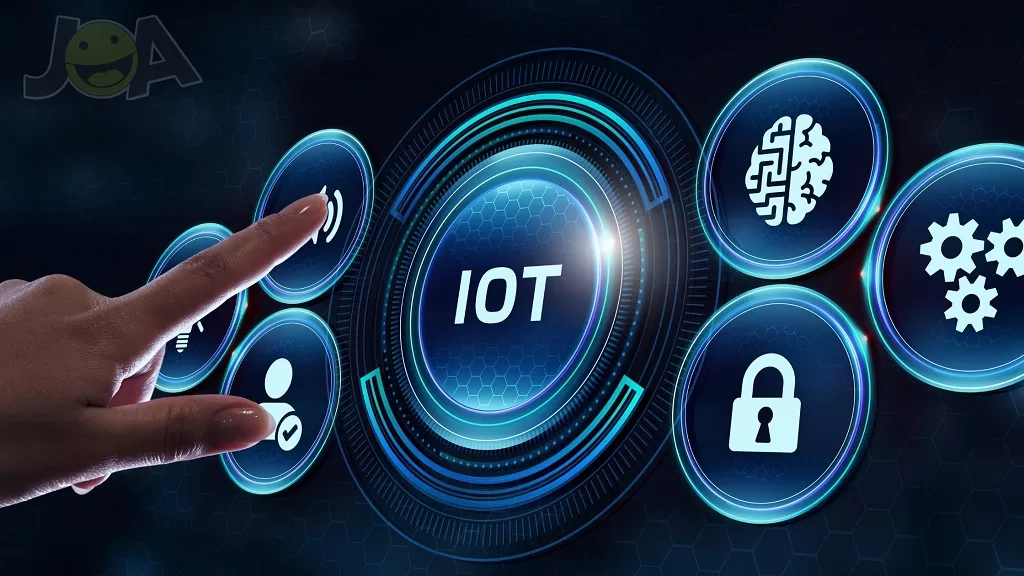Abstract:
New Radio (NR) coverage refers to the range and quality of the connectivity provided by the 5G NR technology, which is the global standard for a unified, more capable 5G wireless air interface. NR coverage is crucial for ensuring that NB-IoT devices can maintain reliable and efficient connections to the network, regardless of their location or the specific deployment scenario.
In the context of NB-IoT devices, achieving optimal coverage can be challenging due to factors such as signal strength, interference, device mobility, and energy efficiency.
In this article, we will discuss the role of the MAC layer in the coverage. The article further elaborates on the use of repetition mechanisms and support for transport block processing over multiple slots as key MAC layer enhancements. Our focus will be on Demodulation Reference Signal (DMRS) bundling across Physical Uplink Shared Channel (PUSCH) repetitions as a significant feature for improving uplink transmissions’ coverage and reliability. The article concludes with simulation results demonstrating the performance gains achieved through these enhancements.
MAC Layer’s Role in NR Coverage
The Medium Access Control (MAC) layer plays a pivotal role in the operation of wireless communication systems, including NB-IoT devices. It resides between the physical layer and the upper layers of the network stack, serving as a crucial bridge that manages and controls how data is sent and received over the network.
In the context of NR coverage, the MAC layer is responsible for several key functions. These include structuring data into frames for transmission, controlling how devices access the transmission medium, and handling error detection and correction. By efficiently managing these tasks, the MAC layer can help to ensure that data is transmitted reliably and efficiently, even in challenging network conditions.
Moreover, the MAC layer plays a significant role in managing the power consumption of wireless devices. By controlling when a device can enter a low-power sleep mode and when it needs to be active to transmit or receive data, the MAC layer can help to extend the battery life of NB-IoT devices, which is a critical factor in many IoT applications.
Coverage Challenges in NB-IoT
Achieving optimal coverage for NB-IoT devices presents a unique set of challenges. These devices often operate in diverse environments, ranging from urban areas with dense network coverage to remote locations where network signals are weak or intermittent. Furthermore, NB-IoT devices are typically designed to be low-cost and energy-efficient, which can limit their transmission power and, consequently, their ability to maintain a strong connection to the network.
One of the key challenges in this context is the trade-off between coverage, energy efficiency, and device complexity. For instance, while techniques such as signal repetition can improve coverage by increasing the chances of successful data transmission, they can also increase the energy consumption of the device and add to the complexity of the MAC layer protocols.
Another challenge is the variability in network conditions, which can affect the performance of the MAC layer protocols. Factors such as interference from other devices, signal fading, and changes in the device’s location or orientation can all impact the quality of the NR coverage.
Addressing these challenges requires a combination of innovative MAC layer protocols and efficient network planning and optimization strategies.
Repetition Mechanisms and Block Processing
One of the key enhancements to the MAC layer that can improve NR coverage for NB-IoT devices involves the use of repetition mechanisms and support for transport block processing over multiple slots.
Repetition mechanisms are a powerful tool for improving the reliability of data transmission, especially in challenging network conditions. By sending the same data multiple times, these mechanisms increase the chances that the data will be successfully received, even if some of the repetitions are lost or corrupted due to interference or signal fading.
In addition to repetition mechanisms, support for transport block processing over multiple slots can also enhance NR coverage. This technique allows the device to spread the processing of a transport block (a unit of data for transmission) over several time slots, reducing the peak processing requirements and making it easier for the device to handle large transport blocks. This can be particularly beneficial in scenarios where the device is operating at the edge of the network coverage or in conditions of high interference, where large transport blocks may be necessary to ensure successful data transmission.
By implementing these enhancements, the MAC layer can help to improve the reliability and efficiency of data transmission for NB-IoT devices, thereby enhancing NR coverage.
DMRS Bundling Across PUSCH Repetitions
The Physical Uplink Shared Channel (PUSCH) is a vital part of the wireless communication system, carrying control information from the device to the network. The repetition factor of the PUSCH is a parameter that determines how many times the same control information is transmitted, which can significantly impact the reliability of the control information transmission.
In Release 17, the dynamic indication of the PUSCH repetition factor is enhanced. This means that the network can adjust the repetition factor based on the current network conditions, such as signal strength, interference level, and device mobility.
For instance, in scenarios where the network signal is weak or the interference level is high, the network can increase the PUSCH repetition factor to ensure that the control information is reliably received. Conversely, in scenarios where the network signal is strong and the interference level is low, the network can reduce the PUSCH repetition factor to save resources and reduce energy consumption.
This dynamic adjustment of the PUSCH repetition factor can help to improve the reliability and efficiency of control information transmission, thereby enhancing the NR coverage for NB-IoT devices.

Figure 1: Simulation results of enhanced repetition outdoor-to-indoor

Figure 2: Simulation results of enhanced repetition outdoor-to-outdoor
The link level simulation results for PUSCH with varying repetition numbers are depicted in Figures 1 and 2. These simulations assume a DFT-s-OFDM waveform and intra-slot frequency hopping for PUSCH, with a TBS of 136, MCS of 0, and 2 DMRS symbols allocated in each slot. The user’s speed is set at 3km/h.
The figures demonstrate a significant performance enhancement when 8 repetitions are considered. For outdoor-to-indoor scenarios, the performance can be improved by 3.2dB with the adoption of an enhanced repetition mechanism, while for outdoor-to-outdoor scenarios, the improvement is 4dB.
The figures also indicate that the link level performance for PUSCH can be improved by increasing the number of repetitions. Specifically, a performance gain of approximately 2dB can be observed when the repetition levels for PUSCH are doubled.
Factors that Impact PUSCH Coverage
The enhancements to the MAC layer in Release 17 have significant implications for the operation and performance of NB-IoT devices.
The performance of the Physical Uplink Shared Channel (PUSCH) is influenced by several factors, including the density of the Demodulation Reference Signal (DMRS), the uplink waveform, and other parameters. The DMRS plays a crucial role in channel estimation, and its density in the time domain can significantly affect the accuracy of this estimation, thereby influencing the coverage of the uplink channel.
In the context of the New Radio (NR) system, a combination of pre-DMRS and additional DMRS is used to accommodate diverse application scenarios and traffic channels. The number of additional DMRS symbols can be adjusted to optimize performance. Simulation results indicate that the demodulation threshold performance is best when the user speed is 3 km/h with no additional DMRS. As the speed increases, the performance improves with one additional DMRS symbol. Therefore, adjusting the density of DMRS can enhance coverage.
The uplink waveform also impacts PUSCH performance. When the PUSCH does not use conversion precoding, it uses the same type of DMRS as the Physical Downlink Shared Channel (PDSCH). However, when PUSCH uses conversion precoding, it uses a low-peak-to-average sequence and supports frequency hopping. The DFT-Spread (DFT-S) OFDM waveform, equivalent to a single-carrier waveform, is often preferred for uplink transmission due to its lower Peak to Average Power Ratio (PAPR) compared to the multi-carrier CP-OFDM waveform.
Implementation of DMRS Bundling Across PUSCH
The time-varying nature of the wireless channel is a challenge that is addressed with a wireless estimation algorithm. The channel estimation used for data demodulation is based on DMRS symbols in a slot. At the cell’s edge, receiver performance can degrade due to channel estimation errors. However, adding DMRS in a slot can enhance channel estimation quality. By improving channel estimation quality and receiver performance, PUSCH coverage can be enhanced. One method to improve channel estimation accuracy is to process DMRS symbols in multiple time slots at the receiver. Therefore, the transmitter needs to send the same or coherent DMRS symbols in multiple time slots. This approach is referred to as DMRS bundling.
The implementation of DMRS (Demodulation Reference Signal) Bundling Across PUSCH (Physical Uplink Shared Channel) Repetitions is a key feature introduced in 3GPP release 16 and further enhanced in release 17. This feature is particularly useful for improving the coverage and reliability of uplink transmissions in 5G NR (New Radio), especially for NB-IoT devices.
Here’s a simplified explanation of how DMRS Bundling Across PUSCH Repetitions is implemented:
- DMRS Configuration: The base station (gNB) configures the DMRS for the PUSCH. The configuration includes the pattern of the DMRS (i.e., the mapping of DMRS symbols to the time-frequency resources of the PUSCH), the number of DMRS ports, and the DMRS sequence.
- PUSCH Repetition: The UE transmits the same PUSCH multiple times, with each transmission referred to as a repetition. The number of repetitions is determined by the gNB based on the channel conditions.
- DMRS Bundling: In each PUSCH repetition, the DMRS is transmitted along with the data. The DMRS in different repetitions are “bundled” together, meaning that they are treated as a single entity for the purpose of channel estimation and demodulation at the receiver (gNB).
- Channel Estimation and Demodulation: At the receiver, the DMRS from all the repetitions are used together to estimate the channel. This channel estimate is then used to demodulate the data from all the repetitions. The data from different repetitions are combined to improve the reliability of the transmission.
- Feedback: The gNB provides feedback to the UE about the quality of the transmission, which the UE can use to adjust its transmission parameters for future transmissions.
Conclusion
In summary, this article has examined the impact of NR Coverage enhancements from 3GPP Release 17. The MAC layer plays a crucial role in managing data transmission over the network. Key enhancements, such as repetition mechanisms, transport block processing over multiple slots, and DMRS bundling across PUSCH repetitions, significantly improve data transmission reliability and efficiency, thereby enhancing NR coverage. Despite the challenges in achieving optimal coverage for NB-IoT devices, these enhancements, coupled with efficient network planning and optimization strategies, effectively address these issues. The presented simulation results underscore the substantial performance gains achieved through these MAC layer enhancements, highlighting the importance of continued innovation in wireless communication systems.
References
- Guo, Z., Chen, D., & Yuan, Y. (2020). 5G NR Uplink Coverage Enhancement Based on DMRS Bundling and Multi-slot Transmission. 2020 IEEE 20th International Conference on Communication Technology (ICCT).doi:10.1109/icct50939.2020.929574
- 3GPP TSG RAN WG1 Meeting #102-e (R1-20xxxxx), E-meeting, August 17– 28, 2020

